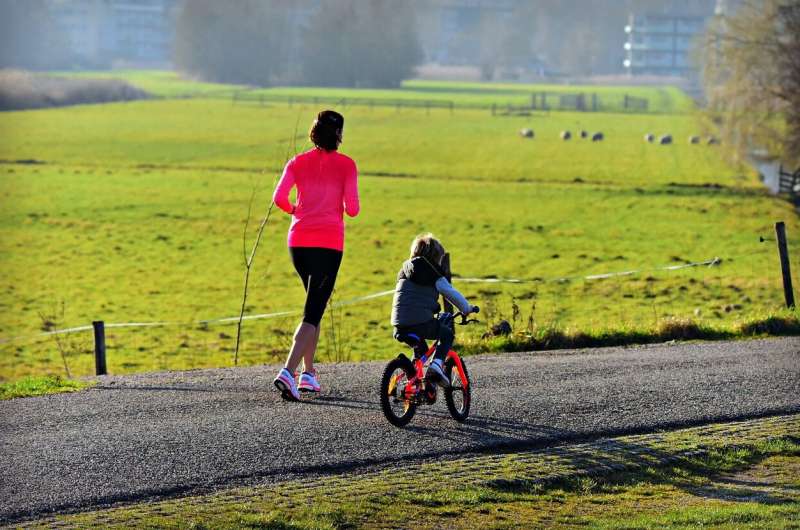This article has been reviewed according to Science X's editorial process and policies. Editors have highlighted the following attributes while ensuring the content's credibility:
fact-checked
peer-reviewed publication
trusted source
proofread
Study suggests exercise may help counteract genetic risk of type 2 diabetes

New research has revealed being active could lower the risk of type 2 diabetes, even in people with a high genetic risk of developing the medical condition.
The University of Sydney-led study found higher levels of total physical activity, especially moderate- to vigorous-intensity physical activity, had a strong association with a lower risk of developing type 2 diabetes. The findings were published in the British Journal of Sports Medicine.
The researchers say the study demonstrates higher levels of physical activity should be promoted as a major strategy for type 2 diabetes prevention.
The study involved 59,325 adults from the UK Biobank, who wore accelerometers (activity trackers worn on their wrist) at the start of the study and were then followed for up to seven years to track health outcomes.
The UK Biobank is a large-scale biomedical database and research resource containing anonymized genetic, lifestyle and health information from half a million UK participants.
This included genetic markers associated with a higher risk of developing type 2 diabetes. People with a high genetic risk score had 2.4 times the risk of developing type 2 diabetes when compared with those with a low genetic risk score.
The study showed more than an hour of moderate- to vigorous-intensity physical activity per day was associated with a 74% lower risk of developing type 2 diabetes when compared with participants who did less than five minutes of physical activity. This was even when other factors, including genetic risk, were accounted for.
Another compelling finding was that participants with a high genetic risk, but who were in the most physically active category, actually had a lower risk of developing type 2 diabetes when compared with those with a low genetic risk but in the least active category.
Senior author Associate Professor Melody Ding from the Charles Perkins Center and the Faculty of Medicine and Health says although the role of genetics and physical activity in the onset of type 2 diabetes is well established, until now most data was self-reported and there was little evidence whether the genetic risk could be counteracted by physical activity.
"We are unable to control our genetic risk and family history, but this finding provides promising and positive news that through an active lifestyle, one can 'fight off' much of the excessive risk for type 2 diabetes."
Associate Professor Ding says moderate-intensity physical activity describes movements that get you sweating and slightly out of breath, such as brisk walking and general gardening.
Examples of vigorous-intensity physical activity include running, aerobic dancing, cycling uphill or at a fast pace and heavy gardening such as digging—all activities that make you out of breath or cause you to breathe heavily.
Study to help inform public health guidelines
Diabetes is a global public health concern. In 2021, there were 537 million adults living with diabetes worldwide. Almost 1.2 million Australians were recorded as living with type 2 diabetes in 2020.
"Our hope is that this study will inform public health and clinical guidelines so that it can help chronic disease prevention for health professionals, organizations and the public."
More information: Accelerometer-measured intensity-specific physical activity, genetic risk and incident type 2 diabetes: a prospective cohort study, British Journal of Sports Medicine (2023). DOI: 10.1136/bjsports-2022-106653




















